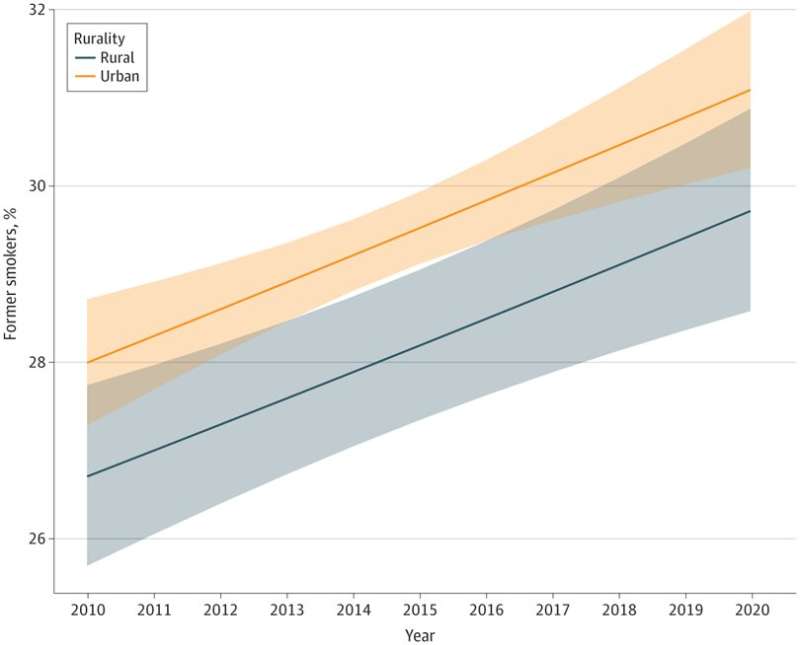Cigarette smoking more prevalent, harder to quit among rural vs. urban Americans

A new study by Indiana University researchers found that from 2010 to 2020, a larger proportion of rural Americans smoked cigarettes—and their odds of quitting smoking were lower—compared to those living in urban areas.
"Cigarette smoking prevalence is higher in rural than urban U.S. communities, and that disparity has only increased over time," said Maria Parker, an assistant professor of epidemiology and biostatistics in the IU School of Public Health-Bloomington. "We wanted to see if quit ratios might account for some of rural vs. urban area smoking disparity, beyond a higher smoking prevalence."
The study team was led by Parker and included colleagues at IU, Rutgers University and Yeshiva University. Their findings were recently published in JAMA Network Open.
Using deidentified data from the U.S. Department of Health and Human Services' 2010-20 National Survey on Drug Use, the researchers analyzed adults who had smoked at least 100 cigarettes in a lifetime, which they defined as lifetime cigarette smoking. Current smoking was defined as smoking one or more cigarettes in the past month, and former smoking as no cigarettes in the past year. Overall and annual quit ratios were estimated as proportions of former smokers among lifetime smokers.
The researchers found that of the 161,348 lifetime cigarette smokers analyzed, 33.5% were former smokers.
In 2020, current smoking prevalence was higher in rural than urban areas—19.2% vs 14.4%—whereas quit ratios were similar in rural and urban areas, at 52.9% and 53.9%, respectively.
However, from 2010 to 2020, the odds of quitting smoking were 75% lower in rural areas compared to urban ones.
Over time, smoking quit ratios among both rural and urban populations increased.
"Our findings support that a persistent rural/urban disparity exists," Parker said. "Not only were smoking prevalence estimates higher in rural areas, but quit ratios were lower in rural areas than urban areas. Rural residents may face more barriers to using smoking cessation services than urban residents, or they may be in an earlier stage of motivation to quit."
Parker said that smoking intervention at the clinical setting, health system or population level might improve reach and sustainability of cessation services for rural residents. She said that leveraging existing smoking quit lines and telehealth solutions may also help rural residents by minimizing barriers to access.
More information: Maria A. Parker et al, Trends in Rural and Urban Cigarette Smoking Quit Ratios in the US From 2010 to 2020, JAMA Network Open (2022). DOI: 10.1001/jamanetworkopen.2022.25326



















